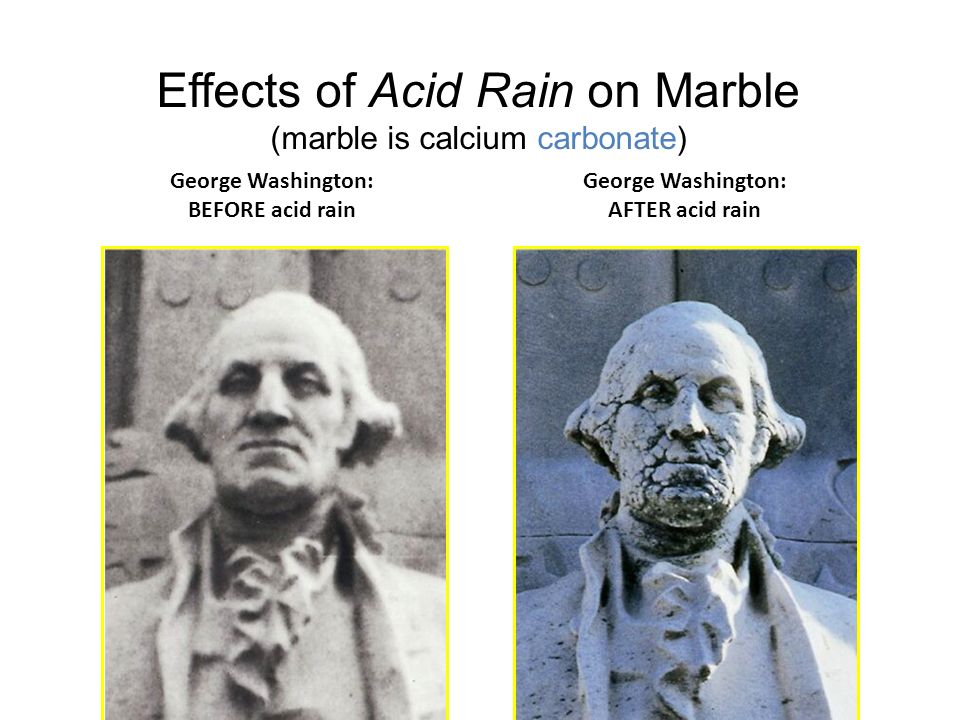When sulfurous sulfuric and nitric acids in polluted air react with the calcite in marble and limestone the calcite dissolves.
Why are structures that contain marble damaged by acid rain.
Acid rain was always a serious problem.
On non acid resistant stones like limestone or marble rust can be a non repairable problem.
Visit byju s to learn more about it.
Acid rain is a huge contributor to the weathering of limestone structures.
Also know about the adverse effects of acid rain on india s pride the taj mahal.
Acid rain rain is called acid rain only if it has more acid than normal.
Acid rain also causes aluminum to be released into the soil which makes it difficult for trees to take up water.
It could take hundreds of year to damage any monument.
Structures made of limestone and marble are susceptible to damage by acid precipitation.
But human intervention and releasing of the massive amount of toxic into the atmosphere.
Go through this article to know what is acid rain and how acid rain occurs.
The components of acid rain such as sulfuric acid nitric acid and carbonic acid react severely with calcium carbonates which is the key component of marble.
It has become a serious topic around the globe in the 21st century.
In exposed areas of buildings and statues we see roughened surfaces removal of material and loss of carved details.
The main causes of acid rain are gases called sulfur dioxide so2 and nitrogen oxides nox.
Regular rainfall contains weak acid.
It causes lots of damage everytime.
Stone surface material may be lost all over or only in spots that are more reactive.
Trees that are located in mountainous regions at higher elevations such as spruce or fir trees are at greater risk because they are exposed to acidic clouds and fog which contain greater amounts of acid than rain or snow.
Study the causes effects along with a few examples and understand the prevention measures.
Structures made of limestone and marble are.
Sulfur dioxide an acid rain precursor can react directly with limestone in the presence of water to form gypsum which eventually flakes off or is dissolved by water.
When sulfurous sulfuric and nitric acids in polluted air and rain react with the calcite in marble and limestone the calcite dissolves.
How does acid precipitation affect marble and limestone buildings.
The most notable effects occur on marble and limestone which are common building materials found in many historic structures monuments and gravestones.
Acid precipitation affects stone primarily in two ways.
What man made structures is most susceptible to damage by acid precipitation.









